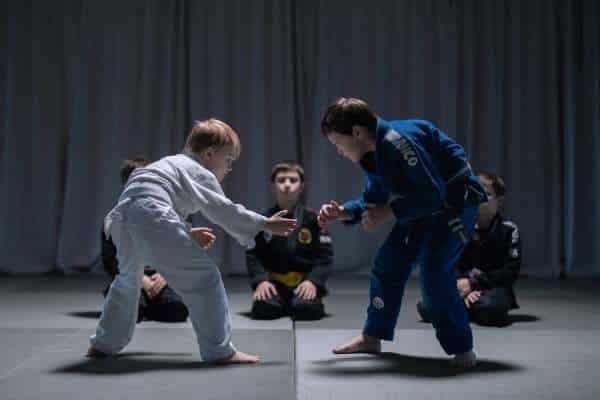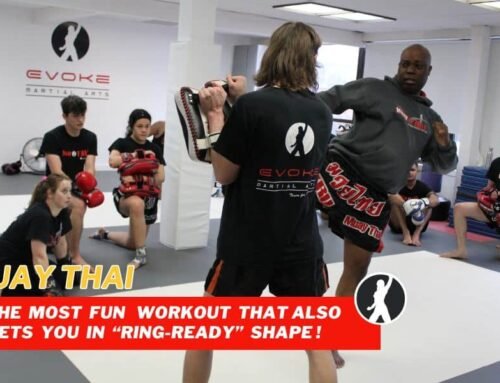
Jiu-jitsu is everywhere right now. Between UFC highlights flooding social feeds and local gyms popping up with beginner specials, it’s easy to see why parents are curious. Grappling looks technical and controlled; it promises real-world practicality; and individuals who train are often buzzing with confidence.
But “popular” and “best for your child” are not quite the same thing.
As a parent, you’re choosing far more than an after-school activity — you’re investing in your child’s safety, social development, and long-term love of traditional values. Jiu-jitsu can be a great fit for some kids, but it’s not automatically the top choice for every child or every family.
Below, we’ll explore thoughtful, research-minded reasons why jiu-jitsu may not be the best martial art for your child—especially when compared with other so-called traditional martial arts like Karate, Hapkido, Taekwondo or Judo that have long focused on a wider “big-picture” approach for kids.
But first off, none of this is about bashing jiu-jitsu. It’s about helping parents make a well-rounded decision choosing the best martial art for their child.
Top reasons jiu-jitsu may not be the best martial art for your child
1: The learning curve and early wins
Jiu-jitsu is largely ground-based and positional. Beginners spend a lot of time learning to escape pins, develop hip movement, and understand leverage. Progress is real — but it can feel slow, especially at first. Skills training require a non-cooperative partner and a lot of repetition before they “click.”
For some kids, especially younger ones, that delayed gratification can be demotivating. By contrast:
- “Traditional Martial Arts” like Karate, Taekwondo, and Kickboxing emphasize striking basics (stances, blocks, simple kicks) that are easy to see and celebrate early. A child can demonstrate a crisp front kick or a clean basic form within a few classes.
- Other combative arts with a traditional approach, like Hapkido or Muay Thai, blend grappling concepts with practical self-defense applications with movement drills that feel “accomplishable” early on.
Those small early wins matter for attention span, confidence, and class enjoyment. If your child thrives when they can see progress quickly, a striking-based program may provide a better on-ramp.
2: Class structure and life-skills emphasis
A major reason parents love Karate, Hapkido, or Taekwondo for kids is the life-skills curriculum that’s baked in: respect, focus, teamwork, perseverance, goal setting, and leadership. Many traditional schools have refined age-specific lesson plans over decades, pairing physical drills with short “mat chats” on character development.
Some jiu-jitsu schools absolutely do this well — but because BJJ’s global boom was driven by adult sport culture, kids’ life-skills curricula can be more variable from school to school. You might find a world-class competition school with a kids program that’s still struggling with having an age-appropriate kids martial arts program. This may be partly why some parents who prioritize martial arts attributes, such as life-skills education, over physical training may consider those as reasons jiu-jitsu may not be the best martial art for your child.
If you value predictable structure, clear behavioral expectations, and consistent character education, look closely at the program design — not just the art. This would apply to all type of martial arts – not just BJJ.
3: Contact intensity and comfort with close quarters
Jiu-jitsu is extremely hands-on. Rolling (sparring) involves continuous close contact, pressure, and being pinned — even when taught safely and playfully. Many kids love this rough-and-tumble style; others find it overwhelming or invasive, particularly at younger ages or for kids who are still developing comfort with body boundaries.
Traditionally, martial arts programs like Kids Karate typically teach distance management first. Drills often start non-contact or light-contact and gradually progress as control improves. For kids who need time to grow into physical confidence—or who are sensitive to touch and personal space—this progression can feel safer.
Parent cue: If your child is hesitant about dog-pile-style play, jiu-jitsu’s standard training environment may be too much too soon.
4: Self-defense in real kid scenarios
Much of jiu-jitsu’s reputation comes from adult sport and MMA contexts. On the ground, leverage beats size; that’s powerful. But real-world self-defense for kids often starts before a grab ever happens: boundary setting, verbal skills, managing distance, and the ability to disengage and run to safety.
While many jiu-jitsu schools teach excellent self-defense, the default culture can emphasize ground grappling and submissions because that’s the sport’s backbone. Kids can inadvertently internalize physical prowess as an identity, which isn’t always ideal for a schoolyard environment (where there are hard surfaces, backpacks, multiple peers, or adult supervision nearby).
Karate, Hapkido, and Taekwondo programs that are built for kids usually front-load:
- Verbal assertiveness and posture
- De-escalation and awareness
- Distance management (keeping hands up, moving away)
- Quick escapes rather than extended ground exchanges
If your priority is a “recognize risk early → create space → get help” skill sequence, a kids-first curriculum like something offered at Evoke Martial Arts & Kickboxing in Toronto may align better.

5: Competition culture and personality fit
Jiu-jitsu competition is thriving. Tournaments are frequent, and many clubs prepare kids specifically for the competition rule set (points for sweeps, advantages, guard pulling, etc.). For some children, that’s motivating; for others, it creates pressure or narrows training towards sport-specific strategies that don’t translate to everyday confidence.
Similarly, traditional martial arts like Muay Thai, Karate, and Taekwondo also have rich competitive scenes, but many kids programs treat competition as optional enrichment, not a central identity. If your child is still discovering what they enjoy, a program that de-emphasizes early competition may be less stressful and more inclusive.
Parent cue: Ask how often the school competes, and whether non-competitors get equal attention and recognition. It can potentially be a future burden if there is mandatory competition every other month in other to progress. Travel costs, registration fees, etc. adds up over time.
6: Communication skills and consent culture
One of the hidden gifts of a good kids martial arts program is how it teaches voice: saying “no,” asking for space, and using confident language. Because jiu-jitsu training involves constant body contact, it can be a great place to reinforce consent (“tap early,” “stop when partner taps,” “ask before trying a new grip”).
However, this is only true if coaches are trained to teach those communication skills intentionally. In some rooms, the message is more implicit and kids can miss the deeper lesson. Many kids-focused martial arts programs run explicit boundary-setting drills and talk through “what to say and do” in school or playground situations.
Look for programs that teach words as well as moves.
7: Attention span, age grouping, and pedagogy
Younger kids (5–7) benefit from frequent transitions: short drills, fun games, clear visual cues, and quick feedback loops. Some jiu-jitsu classes are designed this way; others mirror adult formats (long technique blocks, extended positional sparring, etc.).
Many martial arts schools often have tight age banding (e.g., 4–6, 7–9, 10–12) and well-tested lesson plans for each group. If your child is still developing focus, or if they’re neurodivergent and thrive on routine, those structured classes can be a better fit.
8: Instructor background and kids-first coaching
In all arts, the instructor matters more than the style. That said, because jiu-jitsu’s boom has been adult-driven, it’s common to find a black belt with elite competition chops whose kids-teaching experience is still developing. Being a phenomenal grappler isn’t the same as being a phenomenal elementary educator.
Evoke Martial Arts in Toronto, for example, have specialized in age-appropriate martial arts for kids over the past 20 years and have always hired and trained instructors specifically in youth pedagogy—classroom management, positive reinforcement, and how to translate complex skills into playful progressions.
When you try out a kids martial class, watch how the coaches and instructors’ cue, correct, and connect with kids. Do they get down to the child’s eye level? Do they balance structure with fun? Do shy kids get drawn in?
These are some of the telling signs for simply deciding on whether jiu-jitsu may not be the best martial art for your child.

When jiu-jitsu is a great choice
To be fair, there are times when jiu-jitsu shines for kids:
- Your child loves wrestling, tumbling, or rough-and-tumble play.
- They’re patient with problem-solving and enjoy chess-like challenges.
- The school runs a kids-first curriculum with structured games, strict safety, and explicit life-skills lessons.
- Coaches are experienced youth educators who keep rolling gentle and collaborative, not win-at-all-costs.
If that’s your child and your local academy, jiu-jitsu can be wonderful choice for a martial art for your child.
A practical checklist for parents in choosing any martial art for their child
Use this quick checklist to evaluate a program, whether it’s Jiu-Jitsu, Karate, Hapkido, Kickboxing, Muay Thai, Judo, or Taekwondo:
- Safety first: How are higher-risk techniques modified for kids? What’s the protocol for taps, contact level, and partner matching?
- Hygiene: Are mats sanitized between classes? Are clean uniforms mandatory? How do they advocate for personal hygiene?
- Age-appropriate design: Are classes grouped by age and stage? Are lessons short, varied, and playful for younger kids?
- Life skills: Do coaches teach respect, focus, and boundary-setting explicitly — not just implicitly?
- Progress you can see: Are there clear milestones (stripes, belts, skill checklists) that celebrate effort and improvement?
- Instructor credentials: Do kids’ coaches have specific training or experience in youth pedagogy and behavior management?
- Culture fit: Is the vibe welcoming and growth-oriented, not hyper-competitive? Do non-competitors feel valued?
- Parent communication: Do you receive updates, feedback, and a roadmap for your child’s development?
- Trial class experience: After one trial, does your child leave smiling and asking to return?
Plan B ready: If enthusiasm fades, can the skills transfer easily to another program in the same school or for another discipline?
The bottom line
Jiu-jitsu is a fantastic martial art with real benefits for children — but it’s not automatically the best first martial art for every child. Its contact intensity, slower early learning curve, and sport-centric culture can be a mismatch for some kids — especially younger ones or those still developing comfort with close physicality.
Traditional kids-focused programs like Karate, Hapkido, or Taekwondo often offer a broader, more structured on-ramp: quicker early wins, explicit life-skills training, and a gradual approach to contact.
As a parent, you are probably not interested in the “trendiest” art; you are looking to find the best environment for your child’s personality, goals, and safety. Visit classes. Watch coaches. Ask questions. Let your child try a session or two and then listen—to them and to your gut.
If after doing that you still feel drawn to jiu-jitsu, choose a school that treats kids as kids, not mini adults. If you prefer a bigger-picture foundation first, start with one of the kids or teen martial arts classes at a reputable school like Evoke Martial Arts in Toronto.
Either way, you’ll be setting your child up for confidence, resilience, and a lifelong love of martial arts — and that’s the real win.
Achieve a leaner, stronger, and more alive body while developing amazing self protection skills.
Achieve a leaner, stronger, and more alive body while developing amazing self defense skills.
Training at Evoke has been a truly wonderful experience. As an adult engaging in martial arts for the first time, the environment has been ideal. All of the instructors have been motivating, knowledgeable, and supportive. The classes offer a great workout and a chance to feel a little bit badass. I look forward to continuing the journey!
 Caitlin H.| Hapkido member
Caitlin H.| Hapkido member






